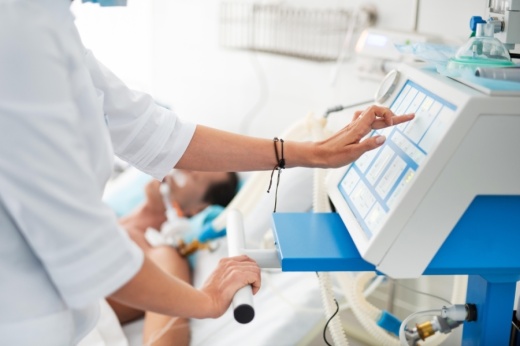The report, part of a daily briefing between government officials and Texas Medical Center representatives, outlines a range of scenarios in which hospital beds and supplies will or will not meet the demands of incoming coronavirus patients. Hospital readiness, the report states, depends on the outcomes of social distancing measures.
Across the nine-county region, there were 2,527 cases and 50 deaths as of April 7, at the time the report was produced.
“When you put an intervention in place to slow down the spread of a virus in a community, it takes about two weeks before you see the impact of it,” Houston Director of Emergency Medicine Dr. David Persse said. “I think that’s what we’re seeing now. ... Please don’t misunderstand that to think that the virus has left town. ... We are still in this game, and we can expect to be in it for quite some time.”
The report identifies outcomes based on minimal, moderate and maximum social distancing efforts. It includes resources from CHI St Luke’s, the Harris Health System, Houston Methodist, MD Anderson Cancer Center, Memorial Hermann and Texas Children’s Hospital.
Mayor Sylvester Turner told reporters April 8 that the Houston’s areas current efforts most closely fit the moderate category of social distancing efforts because essential businesses are still open.
“Maximum social distancing would be pretty much shutting everything down,” he said.
Here are four takeaways from the report, which includes hospitals across the region in the TMC system.
Even with "moderate social distancing", the region’s hospital system may have to nearly double their intensive care unit capacities.
Hospitals within the Texas Medical Center System in the Greater Houston area have plans in place to increase the number of ICU beds available by as much as 80%. These accommodations would add 1,370 ICU beds in the area for a total of 2,832 ICU beds. With moderate social distancing efforts in effect, the need for these beds is just below the roughly 2,900 cases needing an ICU projected in a worst-case scenario under moderate social distancing. Without any social distancing in effect, an additional 9,700 ICU beds would be needed beyond the region’s surge capacity. Of the current base capacity of about 1,450 ICUs, a third are used by non-COVID-19 cases.
A ventilator shortage is possible under current social distancing rules.
A worst-case scenario projection under moderate social distancing efforts showed that hospitals could fall short of its ventilator capacity. TMC hospitals in the region collectively have 2,352 ventilators, but a projected surge in patients could require up to 2,500 ventilators. With no social distancing in effect, that number rises to 10,700 ventilators.
Other protective supplies and equipment should remain available through the outbreak.
Hospitals in the region report having enough of most supplies and equipment to maintain adequate protection of staff and patients through the outbreak. Exceptions include N95 masks and ventilators. According to the report, there is an ability to increase N95 mask stores to meet ongoing demand, but there is not an ability to increase ventilator supplies to meet the most severe surges.
Just over 1 in 3 people positive for coronavirus have been hospitalized.
When the report was produced April 7, the region reported 2,757 positive coronavirus cases. Of those, 1,086 have been admitted to TMC hospitals and 289 have been discharged, the report found. Coronavirus cases currently make up 25% of patients in ICU beds.
Projections vary widely based on the infection rate.
The best and worst case scenarios about capacity vary widely based on the rate of new infections in the area. One example provided noted that the total number of N95 masks needed could range from 500,000 masks to 3.4 million.
View the full report here:





